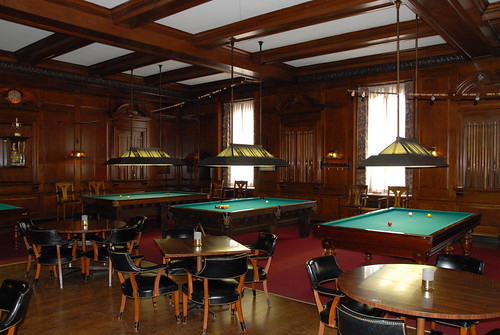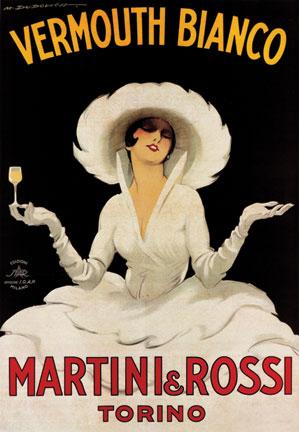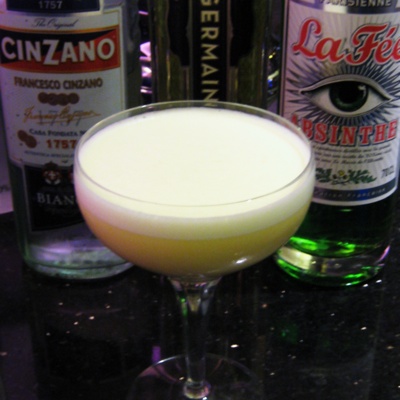The Valentine's Day Massacre
In which the Company is definitely not tired of Valentine's Day, no. Why would you say that?
Read MoreIn which the Company is definitely not tired of Valentine's Day, no. Why would you say that?
Read MoreThis project is on the home stretch and after forty-nine drinks, it's time to look at the elephant in the room. Over the past twelve or so months, we've seen rum drinks and Scotch drinks and vodka and gin and good God, we've even seen Genever a couple of times. What we haven't seen is bourbon.

Bourbon was declared as a "distinctive product of the United States" in 1964, but it's stood as the flagship of American spirit production for long before that. There are a couple of key distinctions between bourbon and European (Scottish and Irish) whiskies, not least the sour mash process. Arguably, given that pretty fundamental difference in production combined with the different grain base (at least 51% corn for bourbon versus the traditional malted barley for Scotch), comparing the two is like comparing apples and oranges. Maybe not so much apples and oranges - oranges and grapefruits might be more appropriate.

The natural question at this point is why has it taken me fifty weeks to feature one of the major spirits? Unfortunately, there's no easy answer. For one, dark spirits are not as popular as white spirits in the UK market, and bourbon is somewhere behind rum and Scotch in that category. As such, it doesn't feature in my thinking all that often and while it would be unfair to say that brands don't support their products with competitions and the like - Maker's Mark recently held took their UK finalists to the States and held the final in the Pendennis Club - but these are often a rarity among a calendar filled with events sponsored by vodka, gin and rum producers.
However, even on these distant shores, bourbon is deserving of more than a tip of the hat. Bourbon is the whiskey on which the cocktail tradition is built which makes it impossible to ignore. When talking about it in cocktails, the obvious point of reference is the Manhattan - I'm hearing an imaginary chorus of people shouting about proper Manhattans being made with rye, but if I put my hands just here over my ears, we'll be ok - and the overwhelming urge is to go old school. And if we're thinking old school, the obvious point of reference is the Sazerac and yes, the rye chorus has a point here. It's the aromatic rinse that makes the Sazerac great, and although absinthe pairs well with rye, it tends to overpower the more delicate flavours in most bourbons. It'd be incredibly opportunistic to claim that adding a rinse to a Manhattan constitutes a whole new recipe, so I've opted to add a couple of complimentary flavours from the great American tastebook in the form of maple syrup and Fee Brothers' Aztec Chocolate Bitters. Still incredibly opportunistic, though.
Maple Union
40ml bourbon (I used Maker's Mark)
20ml sweet vermouth (Cinzano Rosso)
1 barspoon maple syrup
1 dash Fee Bros. Aztec Chocolate Bitters
10ml Yellow Chartreuse
Rinse a chilled martini glass with the Chartreuse. Stir all other ingredients with ice and strain into the chilled, rinsed glass. Garnish with an orange zest twist.

Every month, the online drinkblogging community gets together for a couple of drinks and a bit of a chat, maybe some of those little nibbles if we're really lucky. The resulting flurry of posts goes by the name of Mixology Monday and the theme for this month's party - hosted by Cocktailians - is vermouth. Vermouth represents one of the key innovations in the development of the cocktail. The process of fortifying and aromatizing wine may prefigure the invention of the cocktail, but its incorporation into the new tradition of mixed drinks emerging in the saloons of 1800s America gave rise to classics that are still popular today - a practiced bon viveur needs no introduction to the Manhattan or the Martini. But as the decades have flowed slowly past, vermouth has fallen from grace under the disdainful gaze of such iconic drinkers as Winston Churchill and for one simple fact.
Old people drink vermouth.
In the UK, 90% of vermouth* - particularly dry vermouth (a certain Italian brand of extra dry vermouth if you want to be absolutely specific) - is served long with lemonade over ice to middle-aged women who only go out three times a year: Christmas, New Year and their birthday. This serve has the unfortunate effect of making vermouth seem old and fussy and not fun, which is something of a tragedy because there's so much complexity and variety within the category.
* This statistic is based purely on anecdotal evidence and is probably entirely untrue.

Of course, if you're reading this then there's a good chance that you're already a fan of the virtues of vermouth - at least in its dry and sweet forms. There is also, however, the forgotten child of the family: white, or bianco. It tends to sit somewhere between the two, exhibiting many of the lighter flavours of extra dry variants combined with the sweetness of a rosso.
For all its qualities, vermouth still lacks the cachet that other liquors carry. It's rarely seen as the main ingredient in a cocktail or as a respectable drink in its own right. Spirits and liqueurs often go through peaks and troughs of popularity, but vermouth seems to have been in a hole for an awful long time. Opportunities - like this month's MxMo - to start the long climb up are always welcome.

White Ladder
50ml Cinzano Bianco
15ml St. Germain
10ml La Fée Parisienne Absinthe
15ml lemon juice
1 dash Fee Brothers Aztec Chocolate Bitters
1 whole egg
Combine all ingredients in a shaker and dry-shake briefly. Add ice and shake. Fine-strain into a chilled martini glass. Express a lemon zest over the top and discard.